The local guide here was very passionate about her city. We were here during Corpus Christie so the city was closed except the tourist part and the locals were involved in street parades. We found it a bonus as there were a lot of local things to see but some of the closed roads made the tour a bit of a challenge for the guide and our driver.
We started at the Royal Gardens
. Outside was a statue of moustache 2 – she referred to moustache 1 who had stopped the Turks so saved Christianity, number 2 had stopped the Russians from invading Poland and number 3 is Lech Walesa (from Solidarity). The three other famous people were Chopin, Madame Curie and Pope John Paul II
The gardens had a statue of Chopin in front of a heart shaped pool and under a weeping willow. She emphasised that Chopin was in Warsaw until age 20. He went to Paris then couldn't return as the borders were closed. The family could not get his body back so he is buried in Paris but his heart was smuggled back, hence the pool shape. He was only 39 when he died. There are 800 red roses there but the rain has meant they are not yet in bloom. There is a bench near by with a button that when pressed gives you some of his music. Similar benches are being built throughout the city. During the war the original statue was removed and cut into small pieces – and playing his music was totally banned as it was claimed the Nazi’s felt threatened by the power of his music to inspire the local people
.
We drove through the former royal district. The houses here are in original condition because the Germans took them over immediately – the owners had to leave with one suitcase each. Many are now government or diplomatic residences. We drove past a number of churches with altars set up for Corpus Christie – and we were turned back from roads as they were closing for the parade.
One statue of note was of Charles de Gaulle – supposedly striding out towards his favourite pastry shop. We past the first skyscraper built in 1923, and the rebuilt clock tower.
The bus stopped at the memorial to the 1944 Warsaw uprising. We had seen a documentary about this on the bus as we drove towards Warsaw. The memorial shows the Poles in German uniforms (which had been looted). They added either a white eagle or a white ribbon so they could be distinguished as Poles. One soldier is depicted as entering a sewer. Thousands died in them once the Germans realised they were being used. There is a plaque to the countries who helped with the airlift – because Stalin would not let planes refuel and the Russian pilots often had insufficient fuel for he return trip. We walked back to this moving memorial later and were able to have a closer look and take photos of the various parts to it.
We then went to the Ghetto memorial
. In 1939 1.5 million Jews were deported to camps. Also 22,000 intellectuals were shot by the Russians in a forest using German bullets to deflect the blame. (The Russians had invaded Poland from the east while the Germans invaded from the west). This is the same Forest where the Polish President’s plane crashed recently so is much revered by the Poles.
In 1940 the wall surrounding the ghetto was built – the corners of it are marked on the ground. There were first 2 ghettos, a big and a small with a connecting bridge. All Jews in the city were forced to live there with and average of 8 people per room and the food supply was reduced to 184 calories per day, although underground soup kitchens supplemented this. Over 100,000 died of starvation, cold and disease. Then 265000 were sent to the death camp at Treblinka. Word had got out about the death camps so there was an uprising in 1943 and this resulted in the Germans burning it down house by house until the whole area was leveled.
We were reminded of the Jewish memorial in Berlin which has 2711 blocks of stone each of different dimensions spread over a large square
. People are told to create their own meaning. I thought of suitcases and one of the parts of the Ghetto memorial looked like a forlorn Jewish suitcase. The Berlin memorial was in the news because the blocks of stone are deteriorating.
We saw one more memorial from the bus – sleepers on the road with the name of camps and places of mass graves, and a rail truck at the end with various religious symbols depicting the various religions of the people killed.
We then went to the Old Town. This is almost completely rebuilt and about 3 feet above its original level because of the 20,000 tonnes of rubble still below. The old wall and part of the Royal Palace are original. The rest was built using old photos and especially accurate drawings completed in the 1930s by architectural students as part of their study. Using recycled materials and free labour it was rebuilt in 11 years. Where possible old pieces retrieved from the rubble were incorporated in buildings. One original pillar is lying on the ground as a memorial as well.
The Old Town was in a festival mode. We saw the end of the parade and the children in white for their first communion. We could have gone back to the hotel but, like most of the others, we stayed here for a longer look at the centre.
After the tour we went on to the Museum of Marie Curie – closed unfortunately – and back to the Uprising memorial
. We saw the Barbican and old city walls from 1548. Then we went on to the Cathedral where many of the Royal family had been crowned and married. We had dumplings for lunch at Zapiecek, a place our guide had suggested – a Grandpas portion (11 dumplings) with mushroom fillings and pork gravy and a Grandmas portion (9) of apple with vanilla sauce. I would have liked more sauce but they were nice for a change
We then returned to the hotel by bus and had a 2 hour break as John had a headache. He awoke refreshed so we bought an all day travel pass and took the metro to the Monte Cassino memorial which we knew about because of a cache. We have previously visited the Polish cemetry at Monte Cassino in Italy. We then we revisited the Ghetto memorial for another cache and revisited the Old Town. We had sorbets and watched the crowds. We enjoyed seeing the children with fancy balloons (animals, planes, motorbikes…), the street theatre and especially a Polish wedding party with an exotic blue vintage car. We took a photo of the mermaid which is the symbol of Warsaw and has a prominent place in the square.
We went briefly into St Anne’s church – more ceilings and stained glass – then back to the hotel again using the Metro. In the evening we used our all day ticket on a random tram ride, then back to the café by the hotel. Here we had a great if over-sized meal. John had a whole duck and I had a huge pile of chips with a very nice steak. JB also enjoyed a shot of strong local fruit vodka. The shared meals some groups enjoyed were even bigger - a couple who had one said it would have easily served 4. . There was great music – not always traditional as we recognised 'Incy wincy teeny weeny yellow polka dot bikini’. There were up to 5 musicians at any one time, including a very enthusiastic clarinet player. Incidentally the total cost for the great food, drink and tip was just 110 zloty (only $55!!)
Finally bed, after a great day of fun, sadness and reflection.
Markets and memories
Thursday, June 03, 2010
 Warsaw, Central Poland, Poland
Warsaw, Central Poland, Poland
Other Entries
-
1The Starting Line
May 2212 days prior Nelson, New Zealandphoto_camera1videocam 0comment 10
Nelson, New Zealandphoto_camera1videocam 0comment 10 -
2Our last stop in NZ
May 2212 days prior Auckland, New Zealandphoto_camera1videocam 0comment 0
Auckland, New Zealandphoto_camera1videocam 0comment 0 -
3Beijing or bust...
May 2311 days prior Beijing, Chinaphoto_camera7videocam 0comment 2
Beijing, Chinaphoto_camera7videocam 0comment 2 -
4On the Wall
May 2410 days prior Beijing, Chinaphoto_camera12videocam 0comment 4
Beijing, Chinaphoto_camera12videocam 0comment 4 -
5Hitting the streets of Beijing
May 259 days prior Beijing, Chinaphoto_camera13videocam 0comment 0
Beijing, Chinaphoto_camera13videocam 0comment 0 -
6Goodbye Beijing hello Cologne
May 268 days prior Beijing to Cologne, Chinaphoto_camera3videocam 0comment 1
Beijing to Cologne, Chinaphoto_camera3videocam 0comment 1 -
7A visit to the Dom
May 277 days prior Cologne, Germanyphoto_camera11videocam 0comment 1
Cologne, Germanyphoto_camera11videocam 0comment 1 -
8Eau de Cologne
May 286 days prior Cologne, Germanyphoto_camera5videocam 0comment 0
Cologne, Germanyphoto_camera5videocam 0comment 0 -
9Beer and Chocolate
May 295 days prior Cologne, Germanyphoto_camera8videocam 0comment 2
Cologne, Germanyphoto_camera8videocam 0comment 2 -
10Training to Frankfurt
May 304 days prior Frankfurt, Germanyphoto_camera5videocam 0comment 2
Frankfurt, Germanyphoto_camera5videocam 0comment 2 -
11"Ich bin ein Berliner"
May 313 days prior Berlin, Germanyphoto_camera11videocam 0comment 4
Berlin, Germanyphoto_camera11videocam 0comment 4 -
12Undercover in Berlin
Jun 012 days prior Berlin, Germanyphoto_camera11videocam 0comment 2
Berlin, Germanyphoto_camera11videocam 0comment 2 -
13Poles apart
Jun 021 day prior Warsaw, Polandphoto_camera7videocam 0comment 0
Warsaw, Polandphoto_camera7videocam 0comment 0 -
14Markets and memories
Jun 03 Warsaw, Polandphoto_camera16videocam 0comment 0
Warsaw, Polandphoto_camera16videocam 0comment 0 -
15Personal thoughts on Warsaw
Jun 041 day later Krakow, Polandphoto_camera0videocam 0comment 3
Krakow, Polandphoto_camera0videocam 0comment 3 -
16To Krakow via Auchwitz
Jun 041 day later Krakow, Polandphoto_camera10videocam 0comment 0
Krakow, Polandphoto_camera10videocam 0comment 0 -
17A Krakow rendezvous
Jun 052 days later Krakow, Polandphoto_camera13videocam 0comment 1
Krakow, Polandphoto_camera13videocam 0comment 1 -
18Romance on the Danube
Jun 063 days later Budapest, Hungaryphoto_camera10videocam 0comment 0
Budapest, Hungaryphoto_camera10videocam 0comment 0 -
19At large in Budapest
Jun 074 days later Budapest, Hungaryphoto_camera13videocam 0comment 1
Budapest, Hungaryphoto_camera13videocam 0comment 1 -
20A waltz in Vienna
Jun 085 days later Vienna, Austriaphoto_camera10videocam 0comment 2
Vienna, Austriaphoto_camera10videocam 0comment 2 -
21Vienna Paradox
Jun 096 days later Vienna, Austriaphoto_camera0videocam 0comment 0
Vienna, Austriaphoto_camera0videocam 0comment 0 -
22Proceeding to Prague
Jun 096 days later Prague, Czech Republicphoto_camera6videocam 0comment 1
Prague, Czech Republicphoto_camera6videocam 0comment 1 -
23The beauty of Prague
Jun 107 days later Prague, Czech Republicphoto_camera17videocam 0comment 0
Prague, Czech Republicphoto_camera17videocam 0comment 0 -
24Munchen mini stay
Jun 118 days later Munich, Germanyphoto_camera8videocam 0comment 1
Munich, Germanyphoto_camera8videocam 0comment 1 -
25The Romantic Road
Jun 129 days later Frankfurt, Germanyphoto_camera13videocam 0comment 0
Frankfurt, Germanyphoto_camera13videocam 0comment 0 -
26Meeting Margo in Marburg
Jun 1310 days later Marburg, Germanyphoto_camera6videocam 0comment 0
Marburg, Germanyphoto_camera6videocam 0comment 0 -
27Out and about in Marburg
Jun 1411 days later Marburg, Germanyphoto_camera6videocam 0comment 0
Marburg, Germanyphoto_camera6videocam 0comment 0 -
28The football in Marburg
Jun 1512 days later Marburg, Germanyphoto_camera2videocam 0comment 0
Marburg, Germanyphoto_camera2videocam 0comment 0 -
29Exploring Hesse
Jun 1613 days later Marburg, Germanyphoto_camera14videocam 0comment 1
Marburg, Germanyphoto_camera14videocam 0comment 1 -
30South to the Alsace
Jun 1714 days later Mittelbergheim, Francephoto_camera6videocam 0comment 1
Mittelbergheim, Francephoto_camera6videocam 0comment 1 -
31Vins des Pay
Jun 1815 days later Mittelbergheim, Francephoto_camera6videocam 0comment 1
Mittelbergheim, Francephoto_camera6videocam 0comment 1 -
32Strasbourg and Beyond
Jun 1916 days later Mittelbergheim, Francephoto_camera14videocam 0comment 0
Mittelbergheim, Francephoto_camera14videocam 0comment 0

 Warsaw, Central Poland, Poland
Warsaw, Central Poland, Poland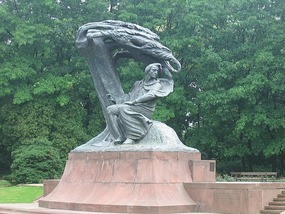

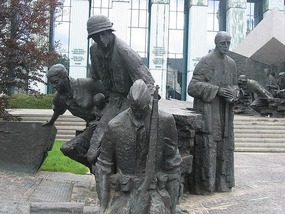
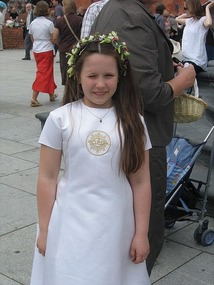
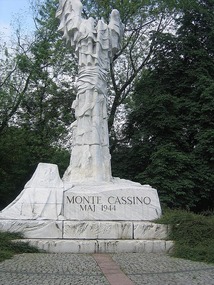








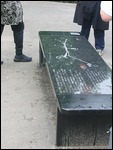
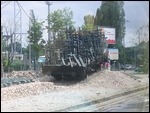
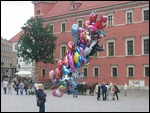

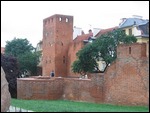
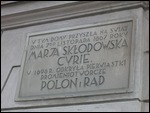
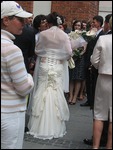
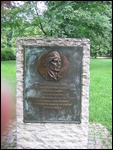

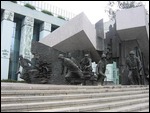
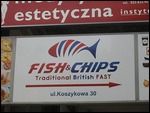
2025-05-23